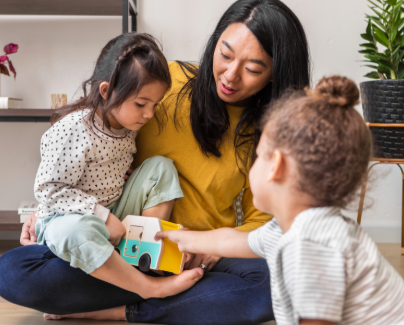In today’s world, screens are everywhere. From televisions and computers to tablets and phones, children grow up surrounded by technology that grabs their attention and makes daily life easier in many ways. While screens offer learning opportunities, entertainment, and connections to friends and family, it is also important for kids to understand how to use them in healthy ways. Teaching children about screen time balance helps them enjoy the benefits of technology without letting it take over their routines. Parents, caregivers, and educators can guide children with warmth and consistency, helping them grow into responsible digital citizens.
The first step in teaching kids about screen time balance is to acknowledge the role technology plays in modern life. Kids may use tablets to practice math, watch shows that inspire creativity, or play games that improve problem-solving skills. By showing children that screens are not inherently “bad” but rather tools that need thoughtful use, adults help avoid the idea of technology being forbidden. This positive perspective encourages cooperation instead of resistance when discussing limits.
Balance becomes more meaningful when children can see how screen activities compare to other parts of their day. Talking about the importance of school, family time, outdoor play, and sleep allows kids to recognize that screens are just one piece of their life. For example, parents might explain that after finishing homework and playing outside, some time on a favorite game or show can be enjoyable. Linking screen time to responsibilities and other fun activities shows children that it fits naturally into a well-rounded routine.
One effective way to teach balance is through modeling. Children often notice how adults use phones or computers. If parents are always on their devices during meals or conversations, kids may feel it is normal to do the same. On the other hand, when parents set down their phones during family activities, it sends a powerful message. Demonstrating healthy habits, such as putting devices aside before bedtime or choosing to read instead of scrolling endlessly, helps children understand balance through observation.
Another important approach is creating routines around screens. Consistent times for using devices help children predict when they can enjoy them, which reduces conflicts. For younger kids, setting clear boundaries, such as no screens before school or no devices at the dinner table, helps them build habits they can carry into later years. Older children may appreciate being part of the discussion when rules are set, as it gives them a sense of responsibility and ownership over their choices.
Encouraging children to explore interests beyond screens is also key. When kids discover hobbies such as drawing, playing an instrument, building with blocks, or joining sports, they learn that joy and relaxation can come from many different sources. Parents can support this by offering materials, signing up for local activities, or simply spending time doing crafts and games together. When alternatives are fun and engaging, screens naturally take a smaller role in daily life.
Conversations about screen use should always be friendly and supportive. Instead of framing rules as punishments, parents can explain the reasons behind them. For example, they might share that too much screen time before bed can make it harder to sleep or that taking breaks from games helps the eyes and body stay healthy. Children are more likely to listen and accept guidelines when they understand the purpose behind them. These discussions also build trust, making it easier for kids to approach adults when they have questions about technology.
As children grow older, it becomes helpful to guide them in making their own choices. Instead of simply setting strict time limits, parents can ask questions like, “How much time do you think is healthy for playing this game?” or “What other activities do you want to do today besides using the tablet?” This approach teaches kids to self-regulate, a skill that will be valuable as they gain more independence. Encouraging reflection helps them notice how they feel after long screen sessions compared to time spent outside or with friends.
It is also worth teaching children about digital quality, not just quantity. Not all screen time is equal. Watching an educational documentary, creating digital art, or video chatting with family members can be more enriching than endless scrolling or mindless play. Parents can guide children to choose programs and apps that stimulate learning or creativity. Asking kids to share what they are watching or playing encourages open communication and ensures parents stay connected to their digital world.
While balance is the goal, occasional flexibility can also be helpful. Special occasions like a family movie night, a long road trip, or a rainy day may call for extra screen time, and that is okay. When kids understand that balance does not mean perfection, they are less likely to feel frustrated when limits are enforced at other times. Flexibility shows children that technology can be enjoyed while still keeping routines healthy.
Another important aspect of teaching balance is discussing online safety. Although this is not directly about time limits, it ties closely to how children use their devices. Understanding how to protect their personal information, recognize safe content, and speak up if something online makes them uncomfortable empowers children to use screens responsibly. Parents can build these lessons into regular conversations, helping kids feel supported and confident as they explore the digital world.
Screen time balance also benefits physical health. Too much sitting in front of a device can reduce activity levels and strain the eyes. Parents can encourage kids to take breaks every half hour to stretch, move, or play outside. Making screen-free family activities part of the week, such as hiking, cooking together, or playing board games, adds fun variety to routines. These activities not only help reduce screen time but also strengthen family connections.
The journey of teaching kids about screen balance is ongoing. As children move from toddlers to teenagers, their needs, interests, and responsibilities change. What works for a six-year-old may not work for a fifteen-year-old. Parents can adjust rules and routines over time, always keeping the goal of balance in mind. Open communication, patience, and flexibility allow families to adapt while keeping healthy habits intact.
In the end, teaching children about screen time balance is less about strict rules and more about nurturing thoughtful habits. By providing guidance, modeling healthy behavior, and encouraging a variety of activities, parents help kids learn how to enjoy technology without letting it take over. This balanced approach allows children to grow up appreciating both the digital and non-digital parts of life, giving them tools to make wise choices as they become more independent. With patience and consistency, families can create a healthy relationship with screens that supports learning, creativity, and connection while leaving plenty of room for play, rest, and meaningful relationships.






